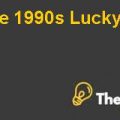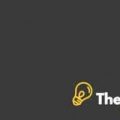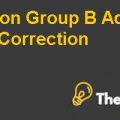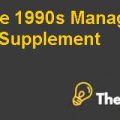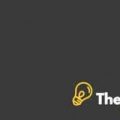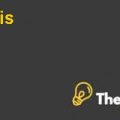
Problem Statement
The problem that High Performance Hire was facing includes the worse situation of the operations of the company and the mismanagement of the business activities. Another issue that the company had in identifying the reason was that why the things had depreciated so much and what actions the company should take in order to improve its business operations.
Analysis
Profitability Ratios
Financial ratios are calculated in order to analyze the financial performance of the Hire Performance Tire Company and then these ratios are compared with the industry financial ratios. The most frequently used financial ratio is the profitability ratios as every company is very concerned about its profitability that determines the company’s overall effectiveness and performance. Profitability ratios include: operating margin, gross profit margin, net profit margin, return on asset (ROA) and return on equity (ROE).
High Performance Tire Ltd had a gross profit margin ratio of 40% when William Wallace took control of the company in 2001 but in the year 2002 and 2003, this ratio dropped by 1 point to 39% in both the years. However, the profit margin during the period of William Wallace Supervision was not that much bad when the industry average standard was 42%. On the other side, Operating Profit Margin; Net Profit Margin; Return on Asset and Return on Equity also decreased from 2001 to 2003, the declining trend could bring terrible problems for the future of the company. In 2001 the company had better profitability ratios but after 2001 these ratios showed declined and resulted below the industry average ratios (see excel file). The cost-cutting measures that Mr. Wallace had adopted weren't enough to compensate the increased expenditures in expanding facilitates so as to integrate new product offerings like fluid changes and other vehicular maintenances.
Liquidity Ratios
Liquidity is an important factor that determines the failure and success of any business. Therefore, profitability is not earned by the business if it has insufficient liquidity ratios. Firms even face losses while having insufficient liquidity and existence of any business depends on its ability to earn profit. Liquidity ratios measure the ability of a company to meet its short term obligations, which includes current ratio and cash ratio.
In the case of HPT, the current ratio in 2001 was 1.88 but in the year of 2002 the current ratio of the company dropped to 1.36. In the year 2003, the current ratio was further decreased to 0.93; whereas, the industry standard of current ratio has been set at 1.90 that showed a decline in current ratio as compared to industry average ratios. At this rate, the company's prospects of meeting its payment obligations to creditors will be severely spoiled. Similarly, the cash ratio of the company declined from the year 2001 to 2003 that were below as compared to the industry average standards(see excel file).
Asset Management Ratios
Asset management ratio is used to compare the assets of the company to its revenue. It determines how successfully a company is utilizing its assets in order to generate revenues. Asset management ratios include inventory turnover in days, fixed asset turnover and total asset turnover. Inventory turnover ratio in days is very important that is used to measure the number of the days a business takes to cycle through its inventory. A higher inventory turnover ratio indicates the better performance as the company is able to sell off its inventory more speedily.
In the case of HPT Ltd., it took the company around 81 days to sell off its inventory in the year of 2001. In addition to this, in the year of 2003 the inventory situation of the company had got even worse and it took around 97 days in order to convert its inventory into sales. However, the company had to improve a lot by selling off its inventories in just 60 days that was the industry average ratio. The fixed asset turnover and total asset turnover from 2001 to 2003 was lower as compared to the industry average ratio (see excel file).
Leverage Ratio
Leverage ratio determines the level at which the investor is using the borrowed cash. Companies with the high leverage are considered to be under the danger of bankruptcy and if they are not able to repay their obligations then it may direct difficulties in getting new lenders in the future. The one way to measure the debt situation of the company is by analyze the debt ratio. This ratio examines the relationship between the total debt and total assets of a company. Furthermore, the higher debt ratio indicates that the company funds more of its assets by provisioning debt.
In the case of HPT, the company had the higher average debt ratio of 35% in 2001 than the industry and the company had increased .........................
This is just a sample partial case solution. Please place the order on the website to order your own originally done case solution.


